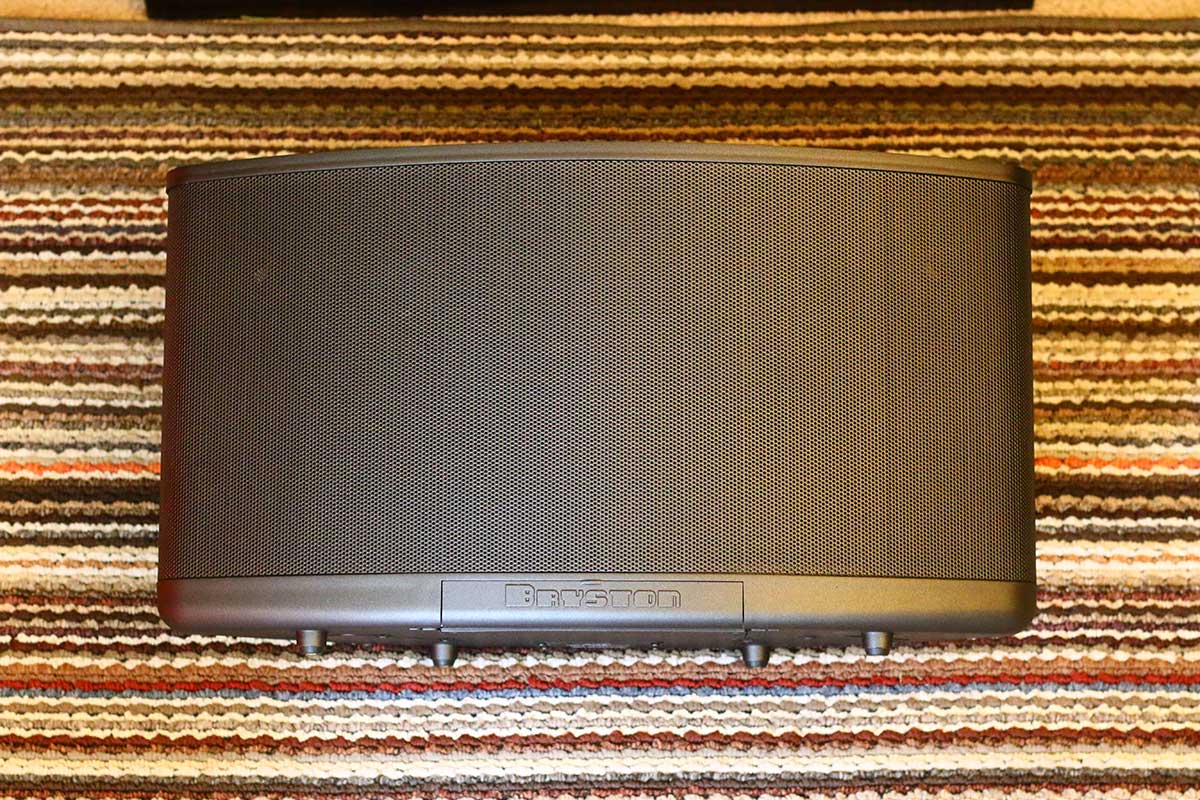
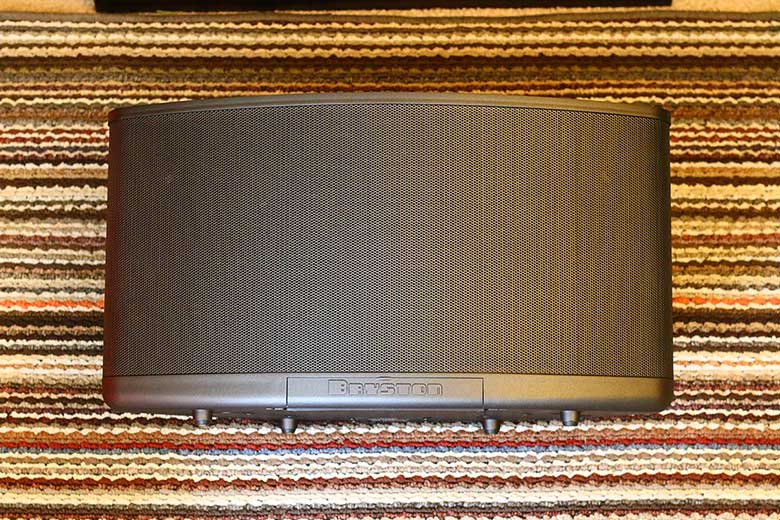
The Master Switch


The Master Switch
Bryston are the last people we expected to see in the wireless speaker space. The venerable Canadian company is better known for producing incredible amplifiers, all done with a kind of nerdy, functional charm. And yet now they’ve produced the BryFi, a sizeable wireless speaker with a clever name that sets itself up as a challenger to the Naim Mu-So and the Devialet Phantom. But did the Canadians succeed? In this review, we break down the BryFi’s design, sound, packaging and accessories, specs and more, as well as how it compares to other models. You can also check out our video review.
The Bryston BryFi is not a portable speaker.
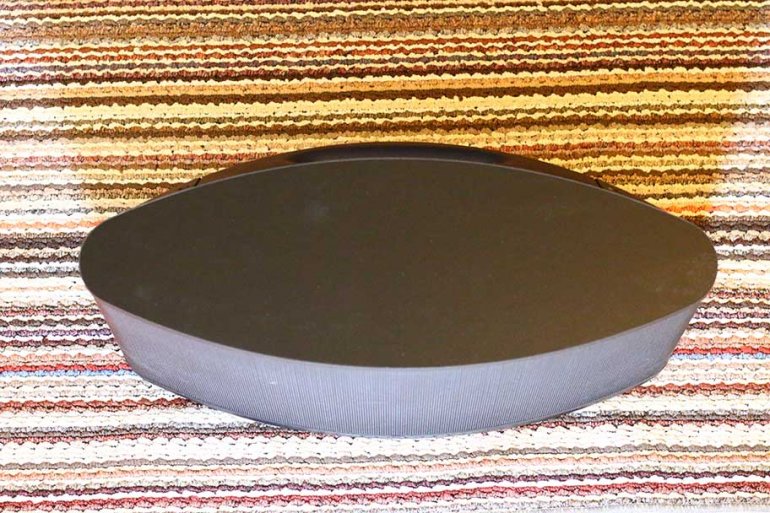
You might think it’s a little bit strange that we’re pointing this out. But on the product webpage, the company makes a point that you can actually purchase battery packs to take the speaker with you wherever you go. There’s even a recessed handle around the back, meaning you can pick it up. This is hysterical, because you are not going to want to pick this thing up, ever. You are going to want to take it out the box and put it somewhere and never move it again.
It’s one of the heaviest wireless speakers we’ve ever tested. At 16lbs, it’s not quite as heavy as the Naim Mu-So or Devialet Phantom (both of which clock in at around 28lbs) but then again, neither of those products claim to be portable. The idea of taking this beast to the park or the beach is absolutely hysterical. Maybe The Rock or the guy who plays The Mountain on Game Of Thrones would be OK with it, but for most people, it’s just not going to happen. It doesn’t even have Bluetooth, although it does have the ability to create its own wireless network, as well as play music off a USB stick or NAS music server, and via AirPlay.
However, once you get past the slightly absurd idea of humping the speaker around, it’s actually a bit of a looker. It’s a big, roughly diamond-shaped unit, with a speaker grille that curves around the sides, and a flip down panel on the bottom edge, embossed with the manufacturer logo. The top is clear of any controls, and is surprisingly handy for placing things on – not exactly brilliant for the sound quality, to be sure, but very useful.
Flip down the bottom panel, and you’ve got a fairly comprehensive set of controls that are easy-to-use and understand. A power button, a lineout, an analogue input, multiple USB ports, and an ethernet port. There is an additional analogue input round the back, as well as a subwoofer out – although as you’ll see in the Sound section below, you definitely won’t be needing one. There’s also an indicator light which, thankfully, issues the magenta-cyan-cerulean combinations preferred by other manufacturers – we’re looking at you, iFi – relying on a simple red-green-blue system of flashing and solid lights to tell you when things are connected. It’s all simple, functional, and works well.
However, that’s when things start to fall apart.
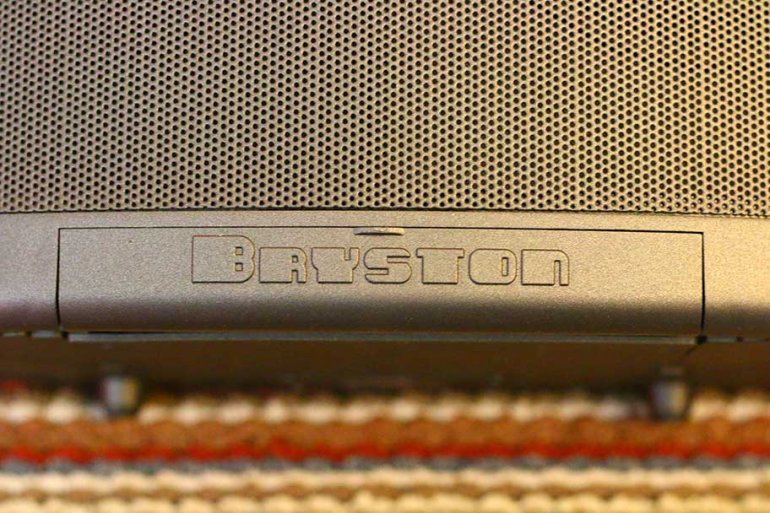
Most of the control for the BryFi is handled via the bespoke mobile app, available on both Android and iOS. While setup is simple, the app itself is clunky and slow, and its actually quite startling just how limited your options are. It’s clear that the company have cleared the engineering towards iOS, where things are simple to setup, but on Android, the experience is almost hilariously obtuse. While you shouldn’t have to use the app again after the initial setup, you will only be able to play your music through a dedicated uPNP player like BubbleUPnP or UPnPlay. UPnP stands for Universal Plug and Play, and is a software protocol designed to let different applications talk to each other. Entirely understandable, given how different android operating systems can be, but that doesn’t make the user experience any less of a pain. All of these players, bar none, are pretty rubbish. If you want to play your music direct from your streaming…well, you can’t. It’s just not an option, at least on Android.
This is weird - the app actually gives you a chance to input your Tidal login, only to not actually let you play Tidal from the app itself. We kept thinking we’d gotten something wrong, or were missing a particular option, and eventually came to the conclusion that even if there was a way to get our music streaming services playing seamlessly, we couldn’t find it. The app, and the accompanying manual, are just way too obtuse.
However, that wouldn’t necessarily be a bad thing, mostly because it’soutside of the company’s control. You can’t, after all, blame Bryston for how the Android operating system works. Which is fine, if you’re in a blaming mood, because what you can hang on them is the lag.
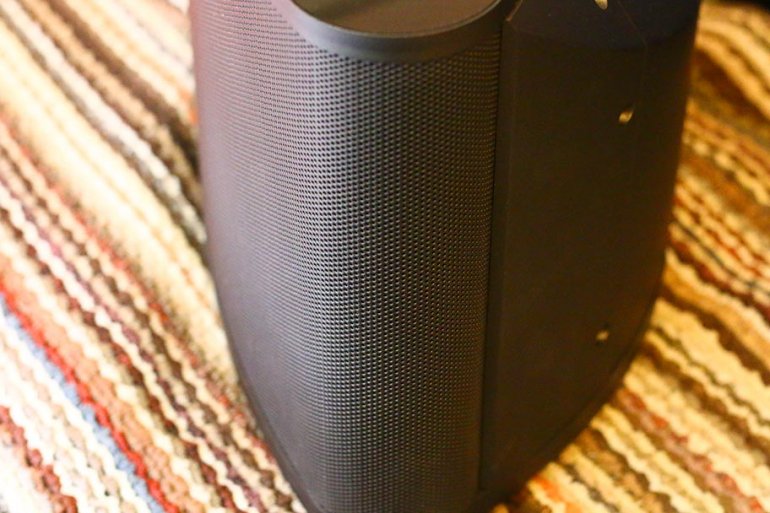
It didn’t matter whether we were running the speakers off mobile or desktop; there was a noticeable lag of around a second between a command input and the speaker actually responding. That meant that any command to play or pause or skip a track meant waiting for a bit until the speaker caught up. If it was just music players being treated in this way, it would be acceptable, but it’s all audio. Including things like YouTube videos. That means that if you’re watching one, you can expect the audio to be a good second or so behind the actual video. That, in 2018, is just unacceptable. Oh, and although there’s an analogue volume control, it’s useless - the volume is almost always slaved to the app. That, plus the lag, plus everything else made using the speaker frustrating and difficult, and got in the way of what should have been a great experience.
Because make no mistake: listening to the BryFi is an experience.
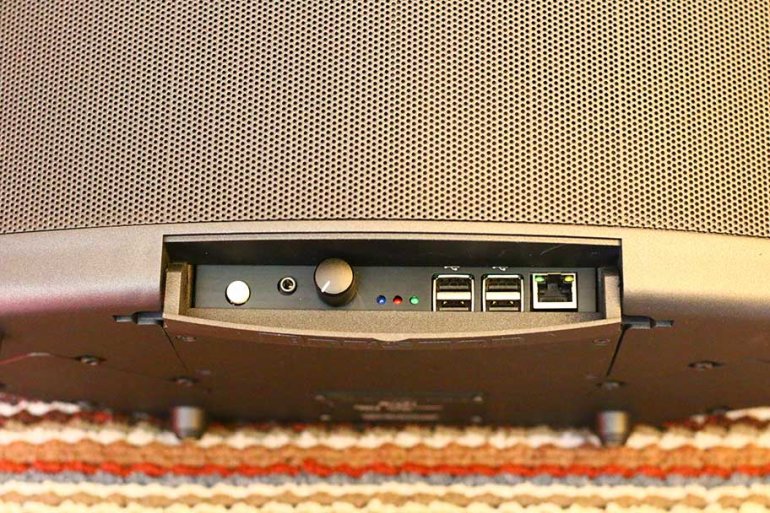
The BryFi is not the best-sounding wireless speaker on the market. That would be the aforementioned Devialet Phantom. But it is easily in the top three, and that makes it something you just have to hear.
This is a company, after all, that has been manufacturing high-end gear for decades, and they know their way around a good speaker system. They’ve packed two of their Mini-A loudspeakers behind the grille, driven by twin 75 watt amplifiers, and mother of God, does it sound good.
To give you an idea: we A/B’d this with a particular speaker set we have in for testing – twin MarkAudio-SOTA Cesti T speakers (full review here), coincidently powered by one of Bryston’s own stereo amps, the B60R. That’s about $7,000 worth of audio equipment right there, and we were expecting it to wipe the floor with the BryFi. Not only did that not happen, but in some cases, we actually preferred the sound of the wireless speaker. We’d still pick the SOTA-B60R wired combo…but we’d have to think about it first.
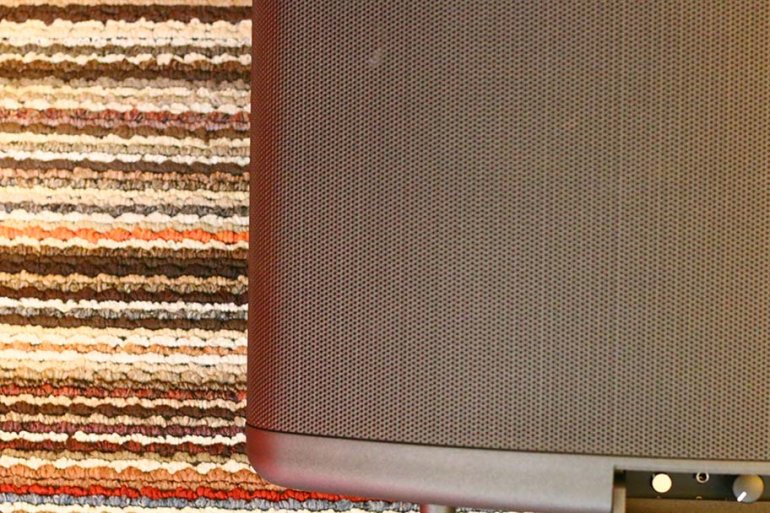
The realism of the music, the sheer level of detail and intensity you get in the instruments and vocals, is just extraordinary. The tuning of the sound is pinpoint, with huge attention paid to the overall tone and complexity of what you’re hearing. And all of it, every beautiful note, is supported by a rock-solid foundation of low end, anchored to the ground beneath so firmly that it feels you could drive a truck into it. Like we said: there’s a subwoofer output on this thing, but you’re not going to need one. It holds its own.
Even if we weren’t impressed by the weight and power of the sound – and we definitely are – the soundstage would knock us dead. It’s wide as a football field, not only allowing you to blanket a room with great audio, but also to give you excellent detail no matter where you’re standing. Again: it doesn’t quite deliver the sheer jaw-dropping experience of the Phantom, but as wireless speakers go, it’s one hell of a thing to have in your house.
In many ways, it reminded us of a slightly cheaper unit – the Paradigm Shift PW-600 (full review). That speaker was, like this one, a victim of terrible design decisions – but once you actually got past that, the sound was worth every single step. We had such fun with the BryFi, getting to spend time sitting back and revelling in the absolutely glorious sound that poured forth from those speakers. The full complement of drivers – each speaker has three – meant that we were never left wanting. The speaker takes any files up to 24 bits/192kHz, which is a good enough quality for demanding listeners.
Whatever ground Bryston lost in terms of design, they retake almost all of it the moment you start playing music.

Another slightly awkward moment: when you realise that the BryFi comes with a cloth pouch. Presumably to protect it while you tote it (and its battery packs) down to the park. Don’t get us wrong; it’s a nice enough little bag. You’ll also forget about it almost immediately.
Beyond that, accessories are minimal. There’s a power cable, and that’s your lot. We do, however, quite like the packaging: a hefty box with camouflage highlights, that looks and feels impressive and premium. Nothing wrong here. However, the manual, such as it is, is too barebones: there’s no info on how to operate the app, or how to connect to, say, a USB loaded with music.
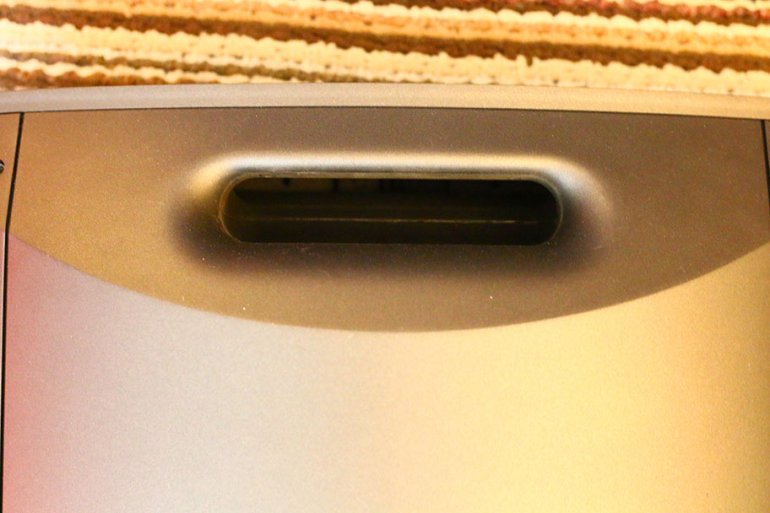
The BryFi demonstrates that Bryston hasn’t quite got the hang of this whole wireless speaker business yet.
A wireless speaker is not an integrated stereo amplifier. Those are complex to build, but the stuff the listener has to do to get them working is actually quite simple. Plug everything in, turn on, select input, turn up volume. Bam. Done. Start adding DACs in and things get more complicated, of course, but it’s still something you rarely have to turn to the manual to deal with.
A wireless speaker is different. A listener has to connect seamlessly, using any one of a dozen different operating systems and music apps. And it’s something you have to get right. Thanks to companies like SONOS, who have connecting to their speakers not only easy but actually fun, the bar is up in the stratosphere right now. The BryFi hasn’t a hope in hell of clearing it. The audio quality is impeccable, and will delight audiophiles…but the problem is, those same audiophiles probably won’t go for wireless speakers anyway. That leaves the rest of us, and there’s no way that the average listener is (a) going to spend one and a half grand on this, and (b) put up with the rigmarole of connecting the speaker.
The BryFi is a wireless speaker designed purely by audio engineers, and that means the user experience falls flat on its face. If you love audio above everything else, then we strongly recommend it. But the fact that a $399 SONOS speaker wipes the floor with it, in terms of experience, means that Bryston have a very long way to go.
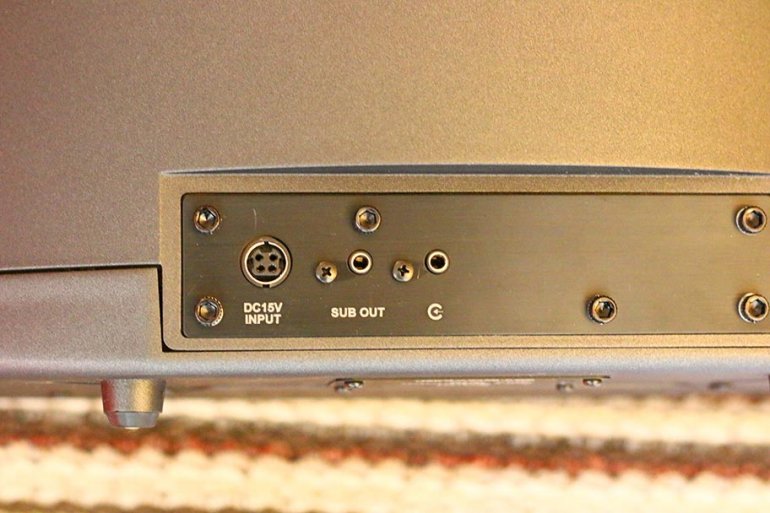
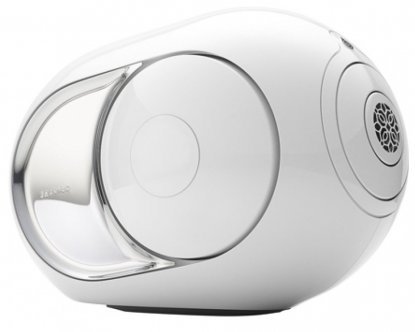 The daddy. The nuts. The big dog. Expensive as hell, but there is quite literally no other speaker like it on the planet. If it’s not the jaw-dropping bass notes, it’s the sight of those twin woofers pumping in and out.
The daddy. The nuts. The big dog. Expensive as hell, but there is quite literally no other speaker like it on the planet. If it’s not the jaw-dropping bass notes, it’s the sight of those twin woofers pumping in and out.
Yes, it’s expensive - but if you can deal with less power, a 1,200 watt version can be yours for only slightly more than the BryFi, and it’ll be a much more superior purchase.
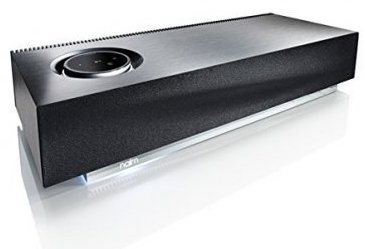 Like Bryston, Naim made their name (so to speak) making nerdy audio gear. Unlike Bryston, they do wireless speakers right, paying as much attention to user experience as they do audio.
Like Bryston, Naim made their name (so to speak) making nerdy audio gear. Unlike Bryston, they do wireless speakers right, paying as much attention to user experience as they do audio.
It might not sound quite as good as the BryFi, but the Mu-So is cheaper, looks fantastic, and is a joy to use. Well worth investigating.
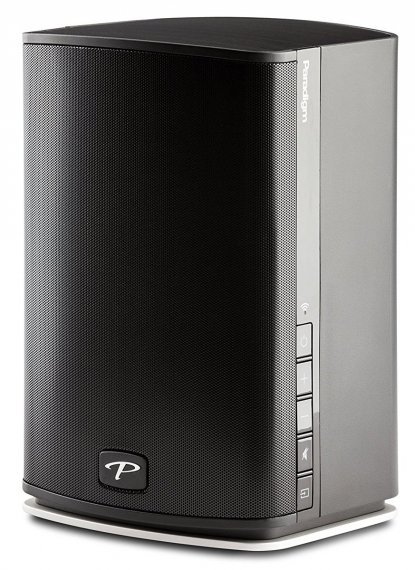 On the one hand, it’s a bugger to set up. The Anthem Room Correction software might be a hidden gem, but its lack of support for Mac laptops and desktops and its idiosyncratic performance make it frustrating to use. And the speaker is ugly as sin.
On the one hand, it’s a bugger to set up. The Anthem Room Correction software might be a hidden gem, but its lack of support for Mac laptops and desktops and its idiosyncratic performance make it frustrating to use. And the speaker is ugly as sin.
However: for $479, at the time of writing, there’s no better-sounding wireless speaker. The PW-600 is a joy to listen to. If you’re keen on sound, and don’t want to crack the bank for the Bryston, pick this bad boy up. Read our in-depth review.
| Speaker | Price | Power | Connectivity | Drivers | App | Sens.** |
|---|---|---|---|---|---|---|
| Bryston BryFi | $1,495 | 150 Watts | Wi-Fi | 1 x 6.5", 1 x 3", 1 x 1" | Yes | Unknown |
| Devialet Phantom | $1,990 | 750 Watts | Bluetooth/Wi-Fi | 4 (Various sizes) | Yes | 99dB |
| Naim Mu-So | $1,349 | 450 Watts | Bluetooth/Wi-Fi | Unknown | Yes | Unknown |
| Paradigm Shift PW-600 | $599 | 200 Watts | Wi-Fi | 2 x 1", 1 x 5" | Yes | 91dB |